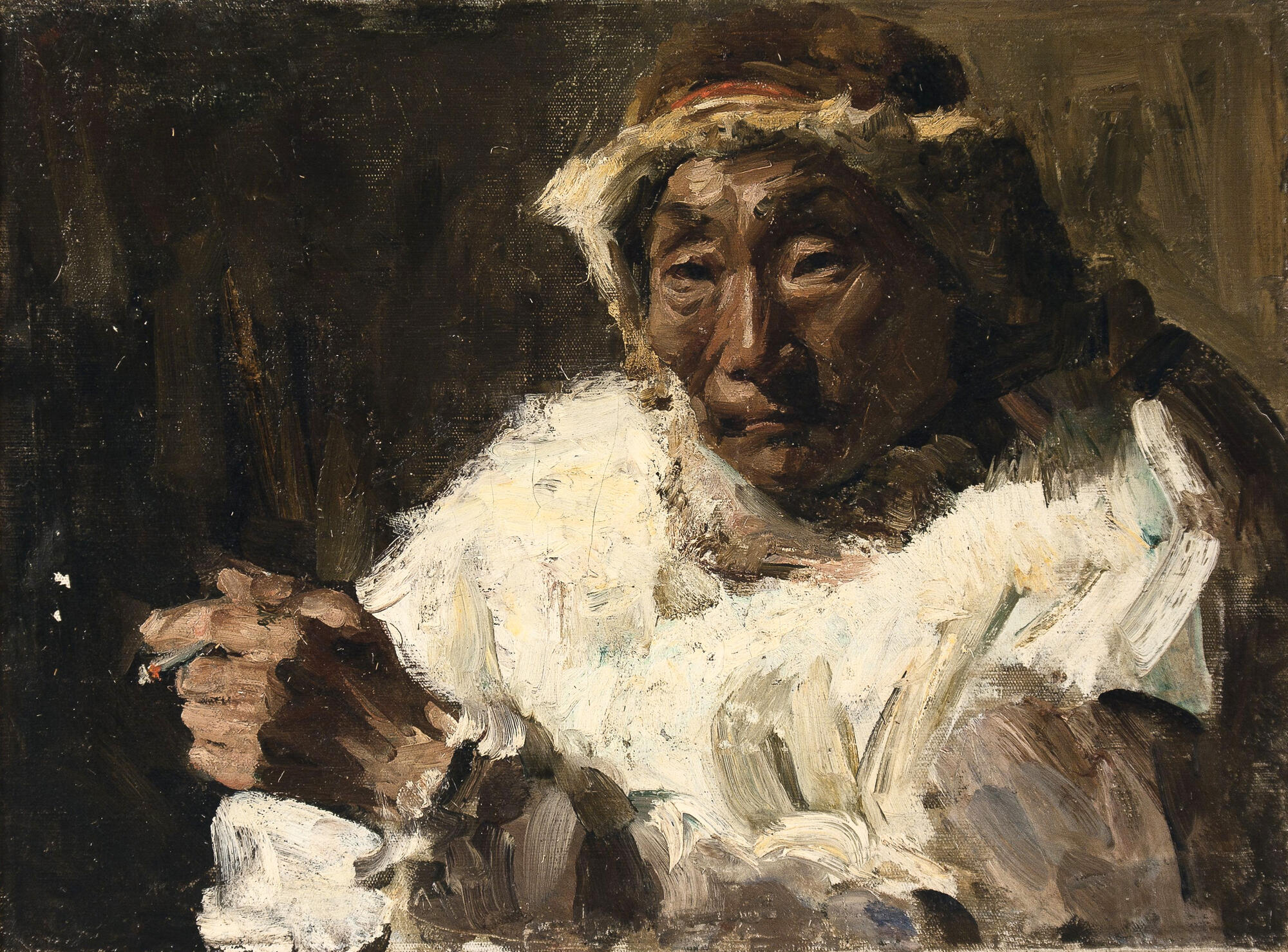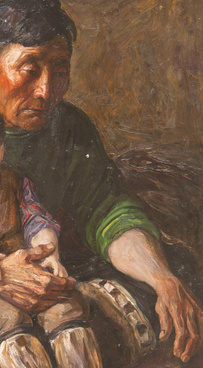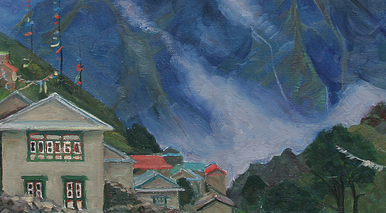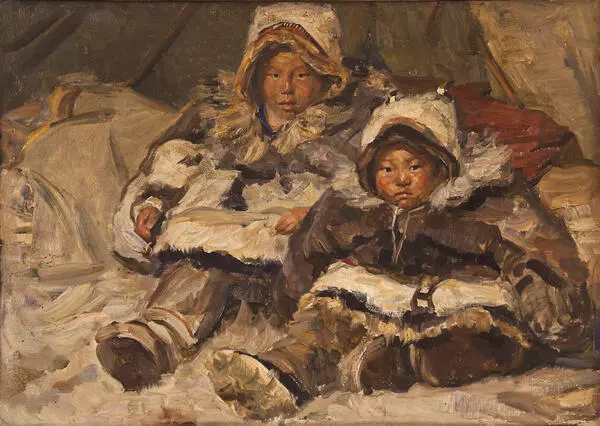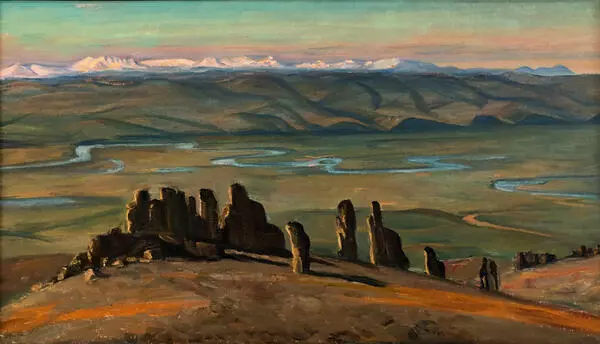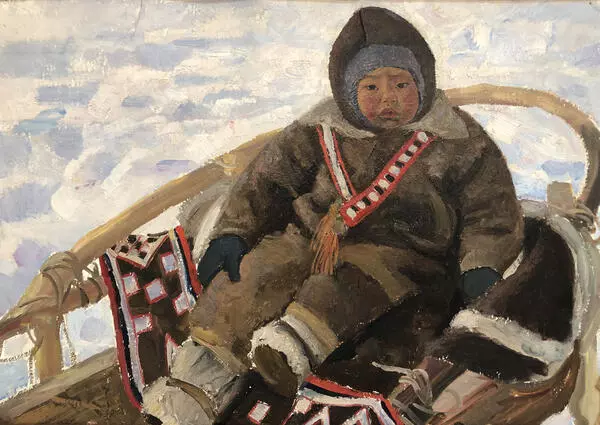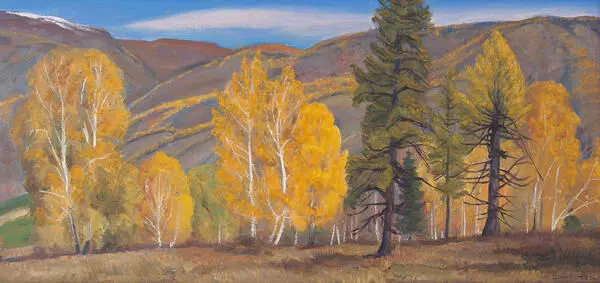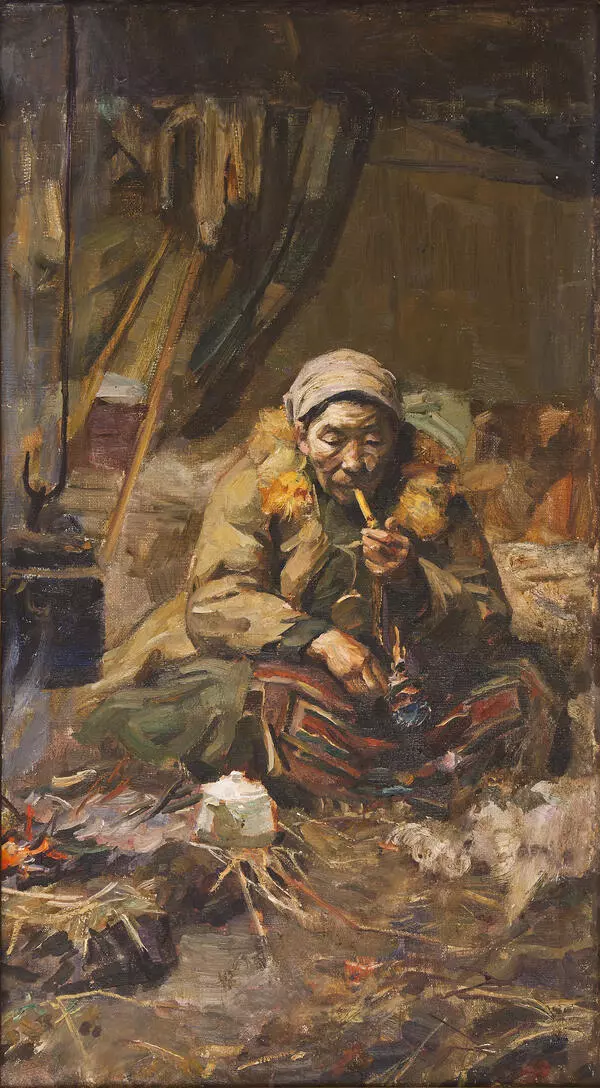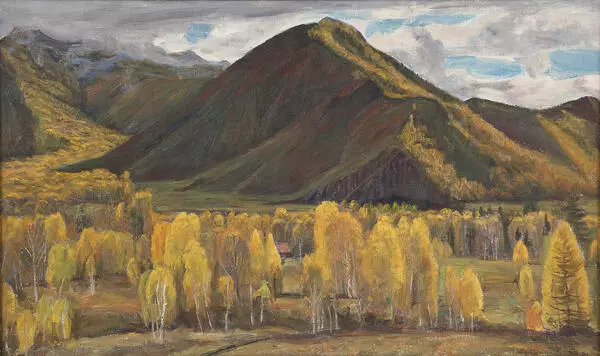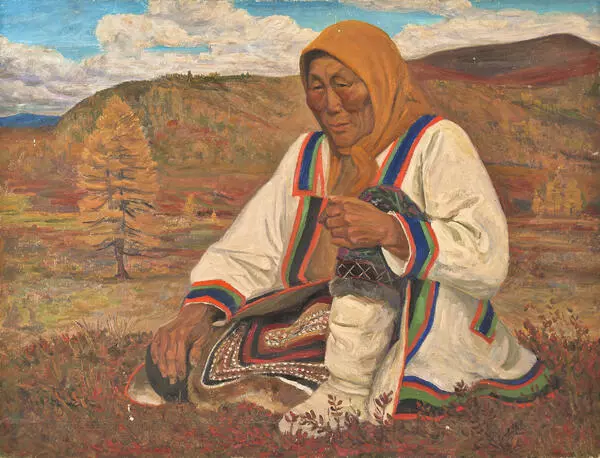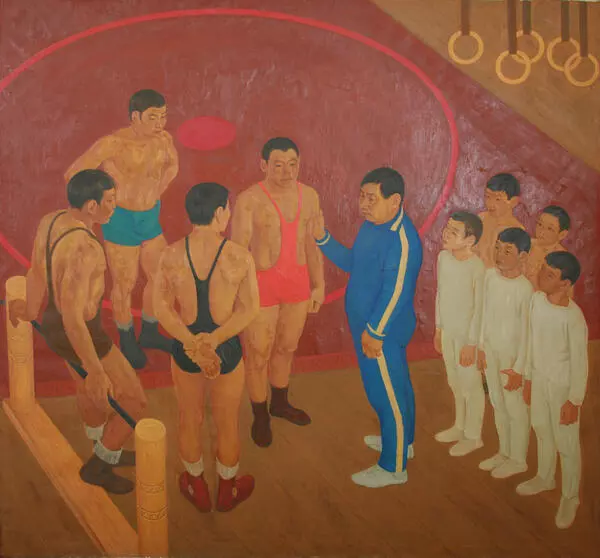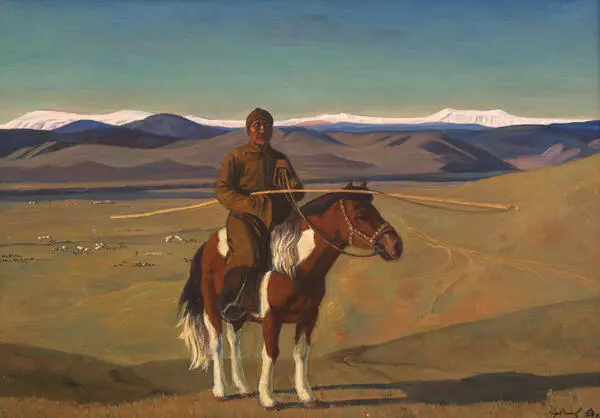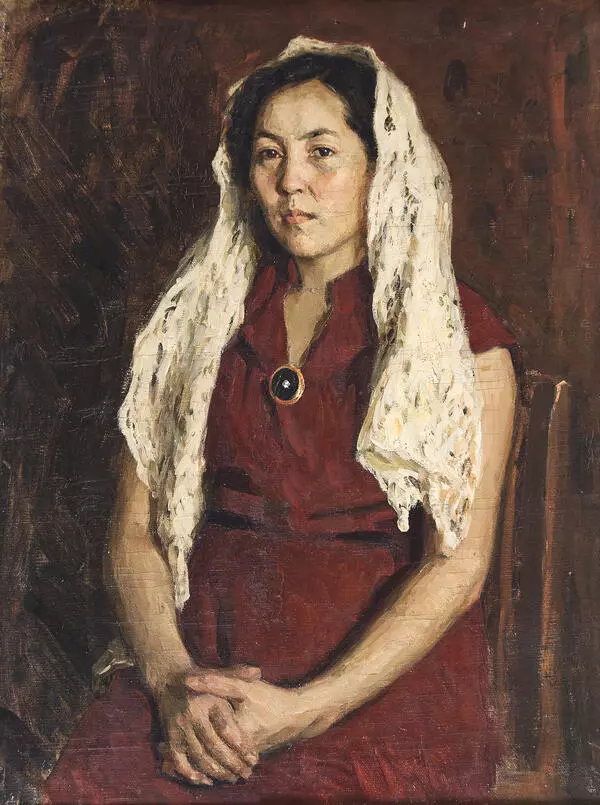Afanasy Osipov is a Yakut painter, academician of the Russian Academy of Arts, People’s Artist of the USSR, winner of the Ilya Repin State Prize of the RSFSR. The exposition of the National Art Museum of the Republic of Sakha (Yakutia) features paintings from the Northern cycle, in which Osipov depicted residents of a harsh climate and restrained Northern landscapes. In the tundra, the artist studied the traditional way of life of the Northern peoples and captured what he saw in his works.
Afanasy Osipov first went to the Arctic North in early 1958. Then he and Semyon Danilov, who later dedicated his “Northern” poem “Happiness of the Eagle” to him, visited the coast of the Arctic Ocean. Osipov made trips to remote villages and camps of reindeer herders of the Nizhnekolymsky District whose indigenous population consisted of Chukchi and Evens. Since then, the tundra has often appeared on the artist’s canvases.
In the North, fascinated by new experiences, Osipov paints portraits and landscapes from life. Etudes of that time attract with their spontaneity and ease of painting. The image of the hero in the picture ‘Reindeer Herder’ combines softness and kindness with strong, harsh strength, as well as thoughtfulness with external simplicity. Afanasy Osipov conveyed a special plasticity of the human body, while limiting the color to two or three original tones. The harmony of the canvas is embodied in the composition, rhythmic, and color structure. The image of the reindeer herder created by the artist reflects both the spirit of the northerners and the specific conditions of everyday life.
On average, Northern shepherds work continuously in the tundra from two months to six months. Living in a traditional environment is a special life. In it, everyone takes their place, performs their functions, and observes order. One of the researchers writes: ‘The life of a reindeer herder consists of incessant work and rare holidays. Men were responsible for herding deer, hunting animals and birds, fishing, making reindeer-breeding equipment and harnesses, and preparing firewood. Women prepared food, preserved and processed food products, processed hides, sewed clothes and coverings for the chum, and often helped in “men”s’ affairs. The children were not idle either. Girls already from 7-8 years old actively helped their mother in her affairs. Some of them could already sew clothes at this age. Boys at 7 years old could harness deer and drive a reindeer team, while the older ones in the age of 10-12 years have already helped herding deer and going fishing.’
It is known that while working on this portrait, Afanasy Osipov lived in the village of Chernyshevsky, and the triptych “In the Land of the Ancestors” was later created based on the sketches created here.
Afanasy Osipov first went to the Arctic North in early 1958. Then he and Semyon Danilov, who later dedicated his “Northern” poem “Happiness of the Eagle” to him, visited the coast of the Arctic Ocean. Osipov made trips to remote villages and camps of reindeer herders of the Nizhnekolymsky District whose indigenous population consisted of Chukchi and Evens. Since then, the tundra has often appeared on the artist’s canvases.
In the North, fascinated by new experiences, Osipov paints portraits and landscapes from life. Etudes of that time attract with their spontaneity and ease of painting. The image of the hero in the picture ‘Reindeer Herder’ combines softness and kindness with strong, harsh strength, as well as thoughtfulness with external simplicity. Afanasy Osipov conveyed a special plasticity of the human body, while limiting the color to two or three original tones. The harmony of the canvas is embodied in the composition, rhythmic, and color structure. The image of the reindeer herder created by the artist reflects both the spirit of the northerners and the specific conditions of everyday life.
On average, Northern shepherds work continuously in the tundra from two months to six months. Living in a traditional environment is a special life. In it, everyone takes their place, performs their functions, and observes order. One of the researchers writes: ‘The life of a reindeer herder consists of incessant work and rare holidays. Men were responsible for herding deer, hunting animals and birds, fishing, making reindeer-breeding equipment and harnesses, and preparing firewood. Women prepared food, preserved and processed food products, processed hides, sewed clothes and coverings for the chum, and often helped in “men”s’ affairs. The children were not idle either. Girls already from 7-8 years old actively helped their mother in her affairs. Some of them could already sew clothes at this age. Boys at 7 years old could harness deer and drive a reindeer team, while the older ones in the age of 10-12 years have already helped herding deer and going fishing.’
It is known that while working on this portrait, Afanasy Osipov lived in the village of Chernyshevsky, and the triptych “In the Land of the Ancestors” was later created based on the sketches created here.
